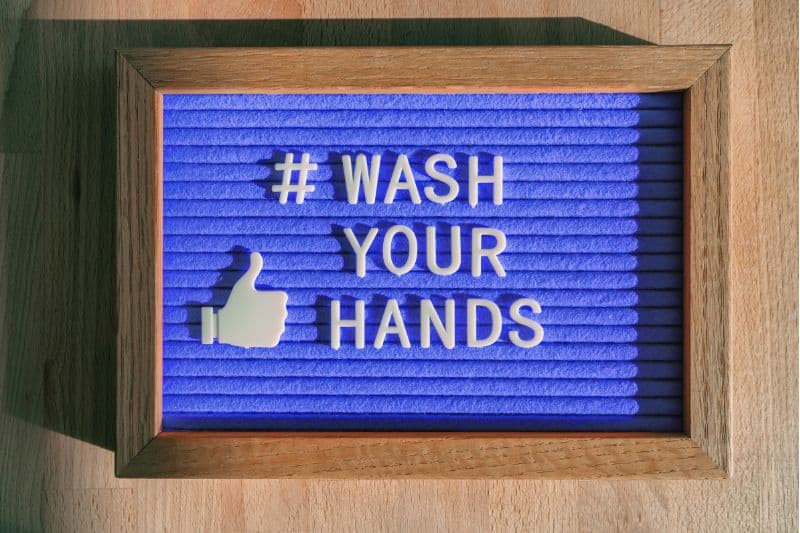Open defecation is the emptying of bowels in the open without the use of properly designed structures built for the handling of human waste, such as toilets. Open defecation is particularly associated with rural and poverty-stricken regions of the world, especially Sub-Saharan Africa and Asia.
Open defecation statistics from around the world show a statistical relationship between the regions with the highest percentage of those that do not use toilets or other human waste facilities and those with low education or poverty.
The World Bank Statistics suggest that regions with high rates of open defecation experience tremendous problems in terms of sanitation and proper waste management.
According to Wikipedia,
“Open defecation is the human practice of defecating outside — in the open. In lieu of toilets, people use fields, bushes, forests, open bodies of water or other open space. The practice is common where sanitation infrastructure is not available. About 892 million people, or 12 percent of the global population, practice open defecation.“
Alarming Reasons For Open Defecation
The reasons that have been given for people who don’t use toilets have either been poverty, which makes it a challenge to build latrines, or lack of government support in providing such facilities.
In cases where toilets are available, reasons for open defecation can extend to cultural issues related to sharing toilets among family members.
For instance, in some cultures, it’s considered taboo for a man to share the same toilet with his daughter-in-law. In some other cases, people end up preferring open-air defecation due to the freedom it gives them as opposed to using a small, dark structure or the displeasure of using toilets that are filthy or not clean.
According to the World Health Organisation (WHO), India accounts for 59 percent of the 1.1 billion people in the world who practice open defecation, leading to some serious negative effects on both their own health and the environment.
Let’s look at how open defecation affects human health and the environment.
Catastrophic Effects of Open Defecation on Human Health
Apart from being unpleasant by nature, open defecation has detrimental effects on the nearby community and the environment. Let’s take a look at some of the negatives it poses to the people around:
1. Increase in Waterborne Diseases
Open defecation is often done close to waterways and rivers, making water contamination more likely. When that happens, the chances of the nearby community getting exposed to human waste are multiplied.
Once exposed, those affected may suffer from a wide range of waterborne issues, including diarrhea. Children below the age of 5 are the most vulnerable, and that’s because their immunity isn’t strong enough to resist disease contraction.

In urban areas, open defecation sometimes occurs on drainage systems designed to channel rainwater away from urban areas into natural waterways. Participants believe the water will wash away their waste.
However, they overlook the fact that many of these areas lack proper facilities to treat the water, removing human waste and the accompanying microbes.
This practice contradicts proper sewage channels, which treat black water waste and direct it into water systems free of disease-causing germs.
Consequently, open defecation near waterways leads to untreated waste entering the water system. As a result, contaminated water ends up in the main water source.
When people in these regions use the same water for drinking and cooking without treating it first, it results in waterborne diseases such as cholera, typhoid, and trachoma.
2. Vector-borne Diseases
Besides waterborne diseases, when human waste collects into heaps, it attracts flies and other insects. These flies then travel around the surrounding areas, carrying defecate matter and disease-causing microbes, and may even land on food and drink that people eventually ingest. In such cases, the flies act as direct transmitters of diseases such as cholera.
3. Compounding the Problem of Disease Exposure
The saddest fact about disease transmission caused by open defecation is the cyclic nature of problems that then begin to manifest. The most common diseases caused by this unsanitary act are diarrhea, regular stomach upsets, and poor overall health.
Diarrhea, for instance, means that people cannot make their way to distant places due to the urgency their calls of nature call for, so they pass waste close to where they have their bowel attacks.
It simply ends up creating more of the same problems that started the disease in the first place and, in turn, leads to more people catching diseases and fewer people using the facilities. This results in more sick people and more opportunities for the disease to spread.
4. Malnutrition in Children
Malnutrition in children is another health problem associated with open defecation. Once a child is a victim of one of the diseases passed on due to the lack of proper sanitation and hygiene, they begin to lose a lot of fluids and lack of appetite for food. As a result, it gives rise to many cases of malnutrition in children.

Also, the situation is worsened by intestinal worm attacks passed through human refuse. Altogether, these problems lead to stunted growth and a weakened immune system that makes the child more susceptible to other diseases, such as pneumonia and tuberculosis.
5. Child Stunting
Child stunting and wasting are observed to be one of the most widespread consequences of open defecation and poor sanitation around the world.
A study published by Dean Spears and Arabinda Ghosh studies 112 districts in India demonstrated that child stunting statistics were significantly higher in areas where the practice of open defecation was more frequent.
In these districts, it was noted that “Over half of the children are stunted, and almost a third of children are severely stunted.” Spears has stated in another paper that living with or near neighbors who continue to practice open defecation, the negative health effects of open defecation are significantly more pronounced owing to densely populated regions.
This is especially common in many areas in India. He mentions, “the difference in average height between Indian and African children can be explained entirely by differing concentrations of open defecation. There are far more people defecating outside in India more closely to one another’s children and homes than there are in Africa or anywhere else in the world.”
6. Gender-based Violence
Open defecation and the lack of adequate sanitation hardware have strong and disproportionate gender-based impacts.
The lack of access to private latrines and toilets renders girls and young women vulnerable to sexual violence, which frustrates efforts for them to lead healthy and productive lives. This is a major public health concern, as well as one of human rights.

As there are no private lavatory facilities for women, they are often forced to relieve themselves in public places during the early hours of the morning or late at night, when the likelihood of sexual assault or violence is higher.
Moreover, the report also outlines the water and public toilets they can use to clean themselves are unclean, which contributes to the fear of infection or sickness in women, further exacerbating the health problems that result from open defecation.
In India, for example, The Sanitation and Hygiene Applied Research for Hygiene Organization (SHARE) report notes various instances of rape that many girls and young women live in constant fear.
Harmful Effects of Open Defecation on the Environment
Now that we’ve examined some of the consequences of open defecation to human health, let’s see how the practice affects our environment.
1. Contamination Via Microbes

Open defecation introduces toxins and bacteria into the ecosystem in amounts it cannot handle or break down at a time, causing great harm to the environment and a build-up of filth.
Also, the load of microbes can become so great that, in the end, they end up in aquatic systems, thereby causing harm to aquatic life.
At the same time, open defecation can contribute to eutrophication, or the formation of algal blooms once the fecal matter is washed down into water bodies.
When that happens, it forms a disgusting scum on the surface of the waterways, which disturbs aquatic life underneath the water by preventing oxygen and light diffusion into the water.
2. Visual and Olfactory Pollution
Heaps of human feces or just the sight of it causes an eyesore and nauseates anyone close. The stink emanating from the refuse is also highly unappealing and pollutes the surrounding air. Such places also attract large swarms that make the area completely unattractive to the eye.
For all those unfortunate to see the regions affected, it creates a sorry sight and reduces the dignity of all those living in the squalor of those regions. The smells augment the problem by disgusting those who live within the affected regions making life awful.
Effective Solutions to Open Defecation
Solving the issue of open defecation requires the action of individuals and even the government’s intervention to address the cultural, economic, and social challenges in tandem.
1. Provision of Toilets
First, there is a need to ensure that there are enough toilets. Most of the communities severely hit by the issue of open defecation are usually very poor. Hence, the only way out is through the respective government’s efforts and the goodwill of local organizations such as CBOs and NGOs to help fix the problem.

Construction of pit latrines and other toilet options, such as compost toilets, is necessary to help deal with the lack of sewer systems.
Governments should also try to establish incentives for people to build their toilets by providing subsidies and putting up public toilets in strategic locations.
2. Corrective Civil Education
Another platform that needs to be addressed is the negative cultural association that people have with toilets. The people should be informed and given civic education to break away from their cultural beliefs on issues such as toilets not being supposed to be shared.
In other words, cultural norms and beliefs must be changed over time through education and awareness creation. With time, people can become informed, drop their beliefs, adjust, and make concessions about the most destructive ones.
3. Incentivize Public Hygiene Participation
By creating government programs that encourage sanitation and personal hygiene, individuals should be involved and advised to be responsible for enhancing their hygiene and overall health.
Through such programs, people can learn the importance of their environments and work towards ensuring that they do not harm themselves by partaking in open defecation.
This effort will eventually reduce healthcare burdens on the government and lessen the number of those who practice open defecation, as it will be seen as a terrible activity.
4. Achieve the Sanitation Target

A clear understanding of what prevents and drives the transition from OD to using a latrine is needed, especially if OD elimination by 2030 is to be accelerated.
Sanitation marketing, behavior change communication, and ‘enhanced’ community-led total sanitation, supplemented by ‘nudging,’ are the three most likely joint strategies to enable rural and peri-urban communities to become completely OD-free and remain so.
It will be a major sanitation challenge to eliminate OD by 2030, but presently, the principal task is helping the poorest currently plagued by OD and its serious adverse health effects as we seek to achieve the sanitation target of the Sustainable Development Goals. In fact, it is a moral imperative for all governments and development professionals.
5. Swachh Bharat Abhiyan (SBA)
On October 2, 2014, Prime Minister Narendra Modi of India launched the Swachh Bharat Abhiyan, or Clean India Mission, on the 150th birth anniversary of Mahatma Gandhi.
According to the Ministry of Drinking Water and Sanitation, in 2015, the CIM achievements report showed that nearly 80 lakh toilets were constructed under the program. But, in December 2016, nearly 3 crore toilets were constructed.
The country still has a long way to go, as open defecation is a common practice in rural India. The government of India has been spending more funds to eliminate open defecation and toilet construction, but the progress made so far needs to be sustained and strengthened for further development.
References:
Benefits of Ending Outdoor Defecation






